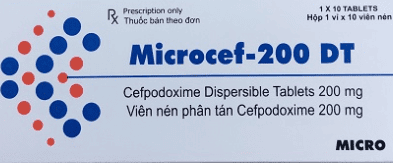This is an automatically translated article.
The article is professionally consulted by Master. Doctor Nguyen Thi Nhat - Doctor of Infectious Diseases - Department of Medical Examination & Internal Medicine - Vinmec Hai Phong International General Hospital. The doctor has more than 10 years of experience in the field of artificial kidneys, and in the field of infectious diseases, examining and managing patients with kidney disease and infectious diseases.Lyme disease is a bacterial disease transmitted by infected deer ticks to humans and animals. Depending on the stage, Lyme disease can cause inflammation in many important organs of the body if not treated promptly.
1. Stages of Lyme disease
Lyme disease is divided into three main stages and symptoms will depend on how advanced the disease is, including:Stage 1 (Early infection): At this stage, the sign of Lyme disease is usually a rash. characteristic red, wide and developed at the site of the tick bite. This erythema is called erythema migrans (EM) and is seen in 60-80% of patients (up to 20-40% of cases are never erythematous, which is important to remember). The spirochetes can be isolated from the margin of the erythema. Erythema migrans is a round patch that appears 3 days to 1 month after a tick bite. Then, the erythematous plaques expand to the size and characteristics of "Bull' eye". However, not all rashes that occur at the site of a tick bite cause Lyme disease.
An allergic reaction to tick saliva usually occurs at the tick bite site. This erythema may be confused with the erythema of Lyme disease. Allergic reactions to tick saliva usually occur within a few hours to a few days after the tick bite and are usually not widespread, disappearing after a few days. Erythema migrans persists longer and subsides within 3-4 weeks.
Stage 2 (Dissemination stage): Stage 2 occurs days to weeks after infection. At this stage, the spirochetes enter the bloodstream to the body's tissues. One or more symptoms and clinical signs that need attention:
Fatigue; Chills and fever; Headache; Muscle and joint pain; Swollen lymph nodes; Secondary annular lesion. Stage 3 (persistent infection): Some symptoms and clinical signs of Lyme disease may not appear for weeks, months, or years after the tick bite. Stage 3 has typical episodes of interstitial pain. The usual clinical presentation at this stage is
Severe headache Osteoarthritis with focus on large joints Heart rhythm disturbances Neurological disturbances often associated with memory, mood and sleep problems Dementia temporary memory Mental fatigue Loss of concentration Numbness in hands, feet, or fingers Meningitis, facial paralysis Swelling in one or more large joints, especially the knee Nervous system abnormalities may include numbness, pain, facial paralysis, often only one side (Bell's palsy) and meningitis (fever, stiff neck, severe headache Stage 3 is relatively serious, so you need to see a doctor for diagnosis and treatment) get medical attention as soon as symptoms appear.

2. Signs of Lyme disease
Difficulty concentrating: Lyme disease can cause cognitive problems that make it difficult to concentrate on work. Usually, we can do several things at once even with background noise, but when someone has Lyme disease, it can be difficult for them to concentrate on getting things done.
Amnesia People with Lyme disease are likely to have short-term memory loss. They find it hard to remember what others say, where they put things, and make appointments right.
Fatigue Feeling tired, exhausted, even drowsy is one of the signs of Lyme disease. Often fatigue caused by Lyme disease is related to the fatigue of congestive heart failure.
Sore throat A sore throat can be an indicator of Lyme disease . When you have Lyme disease, you will feel a severe sore throat.
Difficulty Hearing Hearing can also become underactive in some cases of Lyme disease, making it difficult to focus on a conversation.
Foot injury Even though you don't walk much, your foot suddenly feels sore for no apparent reason. Lyme disease may be the culprit behind that pain. You may not notice pain throughout the day, but feel lightheaded and achy in your legs when you get up from a chair or bed.
Slow heart rate Lyme disease causes heart problems, most commonly slowing the heart rate. If the heart rate becomes too slow, the risk of death is very high.

Sensitivity to light People with Lyme disease often become sensitive to light, sometimes to the point of needing to wear sunglasses indoors or even cover their eyes while sleeping.
Menstrual disorders When you have Lyme disease stage 2 onwards, you will lead to hormonal fluctuations that make a woman's menstrual cycle unstable.
Please dial HOTLINE for more information or register for an appointment HERE. Download MyVinmec app to make appointments faster and to manage your bookings easily.














